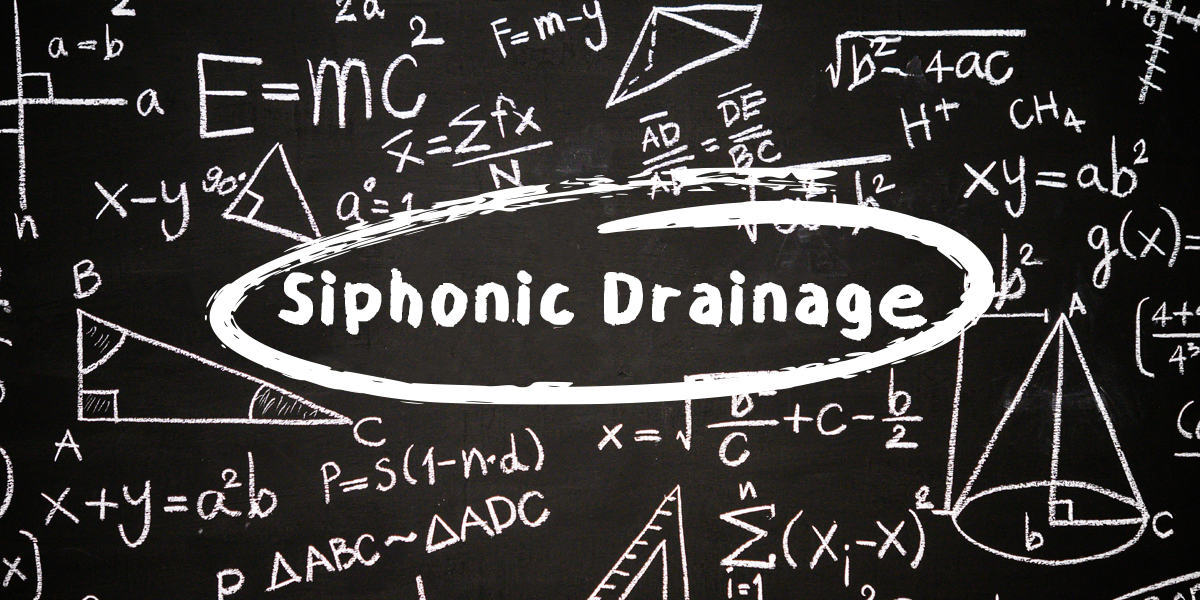One of the most repeated hardships I hear traveling the country is, “I draw-in my Roof Drainage Systems last because they are large diameter pipe and sloping. That is always the first thing I need to figure out how to reroute when changes come in on the job.”
Common Problems from having to pitch pipe on traditional gravity storm drainage:
- Pipework can only slope so far before entering livable space;
Result: Physically Required vertical drops throughout the design - Pipework cannot discharge to only 1 location;
Result: Added civil connections required to meet the storm drainage discharge locations - Overflow downspout nozzle locations are not always achievable with limited chase;
Result: Sacrifice design to route discharges where gravity and space will allow - Not enough room in chase to get pipe to outside of building footprint;
Result: Increase building elevations or civil trenching depth
None of these have anything to do with the performance of a gravity drain; they have to do with the physical limitations of Traditional Gravity Storm Drainage itself.
Siphonic Drainage allows the pipework to run with no pitch
Siphonic Drainage operates by utilizing the natural height of the building in order to create a negative pressure. The design of the drain eliminates air from entering the pipework, which in conjunction with the negative pressure pulls the water off the roof versus gravity drainage which needs slope and air to properly drain.
A hotel is the perfect example to show the benefit of being able to run storm piping with no slope.
The typical hotel design has roughly (5) overflow downspout nozzles on the outside of the building. Those (5) downspout nozzles also require (5) vertical drops on the side a 3+ Story Building, if not taller.
With Siphonic Drainage, the designer has the ability to collect all (5) drains at the top-level, routing everything to only (1) vertical riser. This routing eliminates the need for (4) vertical risers, as well as (4) civil connections to the building, all while keeping the exact same drain locations. This design produces material savings from all the pipe, fittings, couplings, hangers, insulation, and manholes no longer needed. The labor savings is even more substantial, eliminating the need to bore holes in each floor, set the fire caulking, install the pipework, secure the bracing, plus trench, install, and rebury the civil connections headed to the building. Again, all these savings are repeated for each of the (4) runs being eliminated.
Siphonic Storm Drainage delivers an immediate cost savings to any project, but even more impactful is the long-term benefit to the owner of the building, as can be displayed in the hospital industry.
Every 10-20 years hospitals update their buildings given new technology. They do not merely paint a few walls, rather completely move hallways creating new floor layouts. As a result, the existing gravity drain piping needs to be reconfigured, so it isn’t sticking below the ceiling in a new corridor – this rerouting generally requires engineering and redesign along with the labor to implement.
The best practice for Siphonic Drainage is to collect all the roof drains at the top level, then route the piping to a vertical riser next to an elevator shaft, or stairwell – any chase that will never be moved. This in effect removes any concern of the storm drainage needing rework during future remodels and delivers a cost savings benefit on the front end of the project to the hospital owner.
You’ll still have 99 other RFI’s, but Siphonic Roof Drainage Ain’t One.
MIFAB has a full-time design assist team that can help create, design, and balance Siphonic systems for any current project. To submit a project for our team to review please visit: www.mifab.com/SiphonicDSForm
To setup an education session, please reach out to me directly at bdoherty@mifab.com. Our team is here to help from 1% to 99% – you tell us where we fit in best.
https://www.phcppros.com/articles/15888-99-problems-but-a-pitch-aint-one
